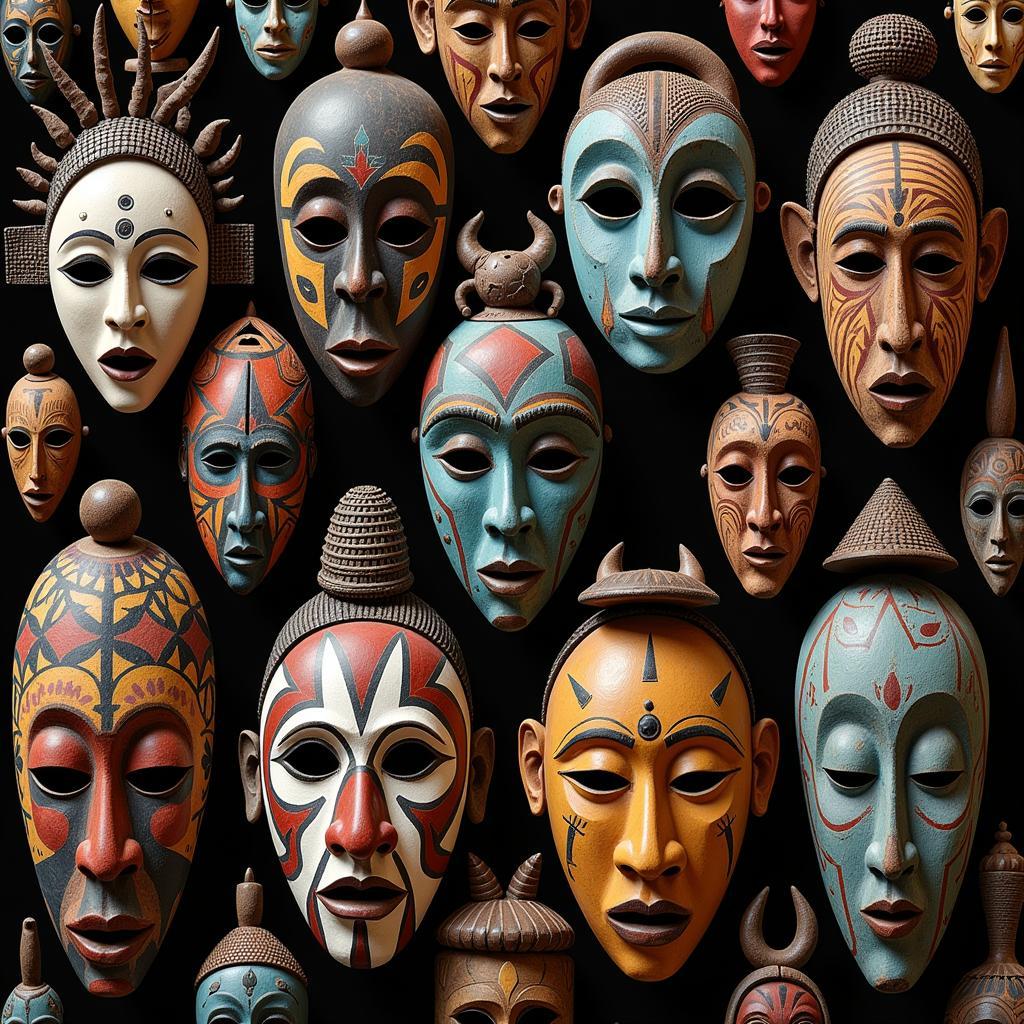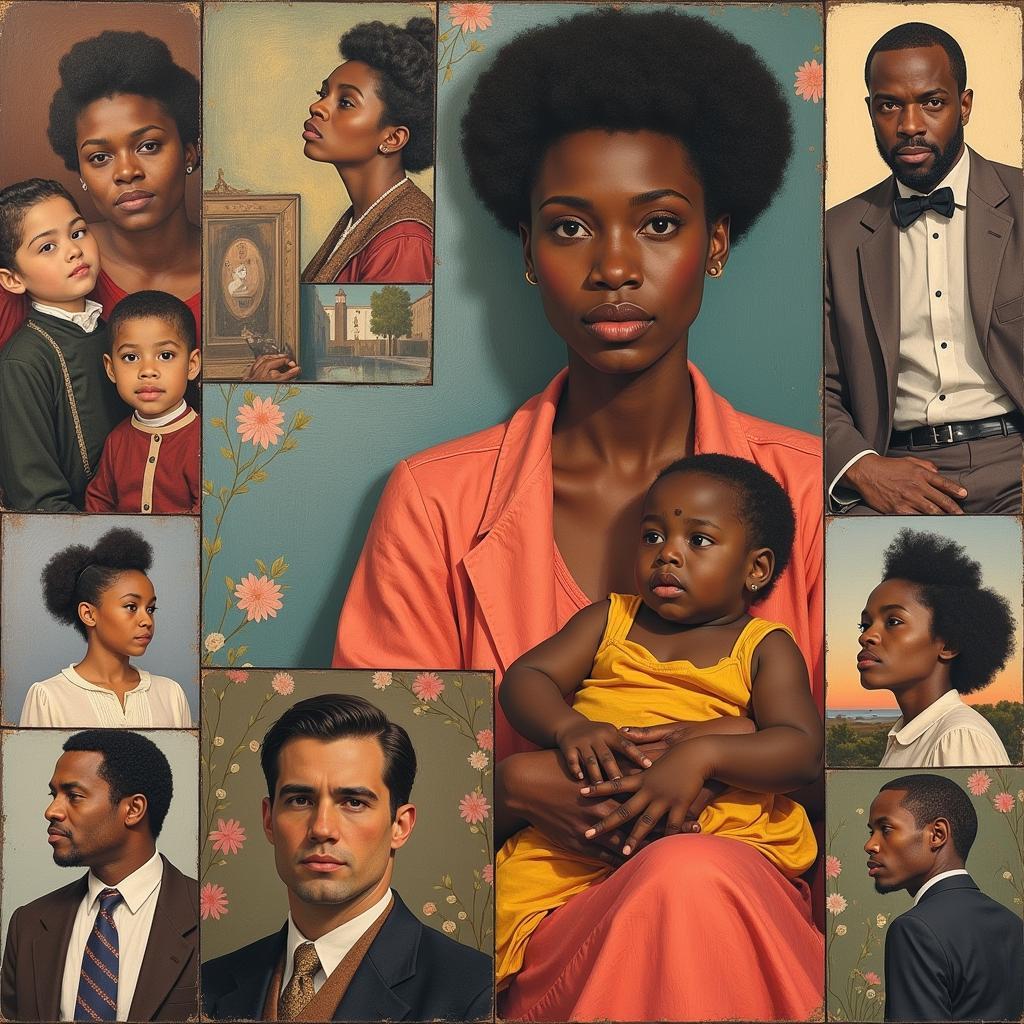Unveiling the Rich Tapestry of African Ethnic Patterns
African Ethnic Patterns are more than just decorative motifs; they are a visual language, narrating stories of cultural heritage, spiritual beliefs, and social structures. From the intricate kente cloth of Ghana to the bold mudcloth designs of Mali, these patterns offer a glimpse into the diverse and vibrant tapestry of African Life. These designs, woven into textiles, carved into wood, painted on walls, and even adorned on bodies, speak volumes about the rich artistic traditions across the continent. After exploring this topic, you can delve deeper into specific African arts like african art wall pictures.
The Significance of Symbols in African Ethnic Patterns
Many African ethnic patterns incorporate symbols that hold deep meaning within their respective cultures. These symbols can represent anything from ancestral spirits and natural elements to proverbs and abstract concepts. For example, the Adinkra symbols of the Akan people of Ghana each carry a specific message, often related to wisdom, courage, or unity. Similarly, the Nsibidi script of southeastern Nigeria utilizes ideograms to communicate complex ideas.
The use of specific colors in African ethnic patterns also holds significance. Often, colors are associated with particular meanings, such as red representing power or blue symbolizing peace. The interplay of colors and symbols creates a layered narrative, adding depth and complexity to the overall design.
 African Mask Patterns and Symbolism
African Mask Patterns and Symbolism
From Generation to Generation: The Transmission of African Ethnic Patterns
Traditional African ethnic patterns are often passed down through generations, preserving cultural heritage and artistic techniques. This transmission of knowledge may involve intricate weaving techniques, specific dyeing processes, or the symbolic interpretation of designs. Within families and communities, these skills are carefully nurtured and shared, ensuring the continuity of artistic traditions.
For instance, the intricate weaving of kente cloth in Ghana is a skill passed down through families, with specific patterns often associated with particular lineages. This intergenerational transmission ensures that the cultural significance and artistic expertise associated with kente cloth are preserved.
African Ethnic Patterns in Contemporary Design
African ethnic patterns are experiencing a resurgence in popularity, influencing contemporary design across various fields. From fashion and interior design to graphic art and product packaging, these vibrant and meaningful designs are adding a unique touch to modern creations.
This renewed interest in African ethnic patterns reflects a growing appreciation for cultural diversity and a desire to connect with global artistic traditions. By incorporating these patterns into contemporary design, artists and designers are not only celebrating African heritage but also introducing these rich visual narratives to a wider audience. You might find some inspiration in exploring african furniture design.
What are the most common motifs found in African ethnic patterns?
Common motifs include geometric shapes, animal representations, and stylized depictions of human figures. These motifs often carry symbolic meaning, relating to cultural beliefs, social structures, or natural elements.
How are African ethnic patterns created?
Various techniques are employed, including weaving, dyeing, printing, embroidery, and painting. The specific techniques used often vary depending on the cultural group and the materials being utilized. Many of these techniques are centuries old and require specialized skills. You can explore other forms of African art such as african body art.
Are African ethnic patterns still used today?
Absolutely! While they remain deeply rooted in tradition, African ethnic patterns continue to evolve and adapt to contemporary contexts. They are not only preserved through traditional practices but also reinterpreted in modern art, fashion, and design. Looking for beautiful images of African children? Check out african baby girl images. And if you’re interested in African fashion, you can see more at african fashion dresses images.
Conclusion
African ethnic patterns offer a captivating window into the diverse cultures and rich artistic traditions of the African continent. From their symbolic meanings to their intricate creation processes, these patterns represent a powerful form of visual storytelling. By understanding and appreciating the significance of African ethnic patterns, we gain a deeper appreciation for the cultural heritage they embody and their continued relevance in the modern world.
FAQ
- What is the meaning of kente cloth?
- How are Adinkra symbols used?
- What are some common materials used in creating African textiles?
- Where can I learn more about African art and design?
- How can I incorporate African ethnic patterns into my home decor?
- What is the significance of color in African ethnic patterns?
- Are there any online resources for purchasing authentic African textiles?
Other Questions You Might Have:
- What are the different types of African weaving techniques?
- How are traditional African dyeing methods practiced today?
- What is the role of African ethnic patterns in storytelling?
Further Reading:
- Exploring the Symbolism of African Masks
- The Art of African Textile Design
- A Guide to African Pottery Traditions
Need Support?
Contact us at Phone Number: +255768904061, Email: kaka.mag@gmail.com Or visit our office: Mbarali DC Mawindi, Kangaga, Tanzania. We have a 24/7 customer support team.
